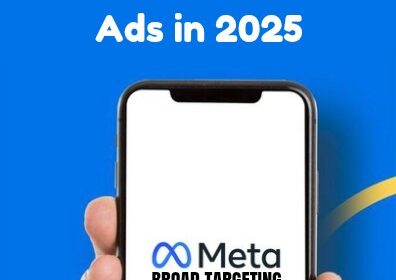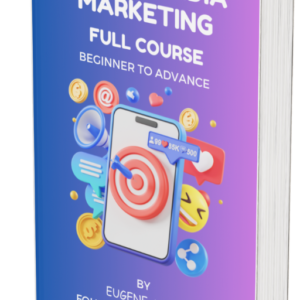In today’s digital age, online advertising has become an indispensable tool for businesses to reach their target audience and achieve their marketing goals. From brand awareness to driving sales, online advertising campaigns offer a powerful way to connect with potential customers across the web.
But launching a campaign is just the first step. To ensure your online advertising efforts are truly successful, it’s crucial to track and measure their performance. By closely monitoring key metrics, you gain valuable insights into how your campaigns are resonating with your audience and what adjustments might be needed to maximize their impact.
This ultimate guide will equip you with the knowledge you need to become a master of measurement. We’ll consider the essential metrics you should track for different online advertising campaign goals, along with practical tips for optimizing your campaigns based on the data you collect.
Are you ready to unlock the full potential of your online advertising efforts and achieve a stellar return on investment (ROI)?
Why is Measurement Important in Online Advertising?

Imagine pouring your time and resources into a beautifully designed billboard on a busy highway. But there’s one crucial problem – you have no way of knowing how many people actually saw your billboard, let alone if it sparked any interest in your business. This is essentially what happens with online advertising campaigns if you neglect measurement.
Tracking key metrics goes beyond simply satisfying your curiosity about how your campaigns are performing. It empowers you to make informed decisions and optimize your advertising efforts for maximum impact. Here’s why measurement is absolutely essential for successful online advertising:
#1. Understanding What Works (and What Doesn’t):
Are your carefully crafted ad creatives resonating with your target audience, or are they scrolling right past? By tracking metrics like click-through rates and conversion rates, you gain valuable insights into the effectiveness of your campaigns. This data allows you to identify what’s working well and what areas need improvement.
#2. Optimizing for Better Performance:
Measurement isn’t just about passive observation. It’s about using data to actively improve your campaigns. With insights gleaned from key metrics, you can refine your targeting to reach a more qualified audience, adjust your ad copy for better engagement, and ultimately drive more conversions.
#3. Budget Allocation with Confidence:
Advertising budgets are precious resources. Tracking metrics allows you to see which campaigns are delivering the highest return on ad spend (ROAS). This data-driven approach helps you allocate your budget more effectively, focusing resources on campaigns that are demonstrably generating positive results.
#4. Demonstrating ROI:

In the world of marketing, justification is key. Tracking metrics allows you to quantify the impact of your online advertising efforts. By demonstrating the return on investment (ROI) your campaigns generate, you can secure continued support from stakeholders and secure budget for future advertising initiatives.
#5. Staying Ahead of the Curve:
The online advertising landscape is constantly evolving. By tracking key metrics and analyzing trends, you can identify what’s working in your industry and adapt your strategies accordingly. This proactive approach ensures you stay ahead of the curve and maintain a competitive edge.
#6. Building a Culture of Data-Driven Marketing:
Measurement fosters a data-driven marketing culture within your organization. By basing decisions on hard data rather than gut feeling, you can create a more strategic and accountable marketing approach that delivers consistent results.
In the next section, we’ll explore the key metrics you should track for different online advertising campaign goals, turning data into actionable insights for success.
Key Metrics to Track: Aligning Measurement with Your Goals
Not all online advertising campaigns are created equal. Each campaign has a specific objective, whether it’s raising brand awareness, driving website traffic, generating leads, or securing conversions (like purchases or sign-ups).
To effectively measure success, you need to track the right metrics aligned with your campaign goals. Here’s a breakdown of key metrics to focus on for different advertising objectives:
Brand Awareness Campaigns:
#1. Impressions:
The number of times your ad is displayed across the web. This metric provides a sense of the overall reach of your campaign and how many people potentially saw your brand message.
#2. Reach:
The number of unique users who saw your ad at least once. This helps you understand how many individual people your campaign is reaching.
#3. Engagement Metrics (Likes, Shares, Comments):
Track how users interact with your ad on social media platforms. High engagement suggests your ad is resonating with your audience and generating interest in your brand.
Traffic Generation Campaigns:
#1. Clicks:
The number of times users click on your ad and are directed to your website or landing page. This metric indicates how effective your ad is at capturing user interest and driving them to learn more about your offering.
#2. Click-Through Rate (CTR):
This metric goes beyond raw clicks and calculates the percentage of users who see your ad and actually click on it. A higher CTR suggests your ad is compelling and effectively targeting the right audience.
#3. Website Traffic Generated:
Track the total number of visitors your website receives from your ad campaigns. This allows you to gauge the overall impact of your advertising efforts on website traffic.
Lead Generation Campaigns:
#1. Lead Capture Forms Submitted:
This metric goes beyond website traffic and focuses on the number of potential customers who fill out a lead capture form on your landing page after clicking on your ad. This indicates genuine interest from qualified leads.
#2. Cost per Lead (CPL):
This metric calculates the average cost you incur for acquiring a new lead through your online advertising campaign. By tracking CPL, you can assess the efficiency of your lead generation efforts.
Conversion Campaigns:
#1. Conversions:
This is the ultimate metric for conversion-focused campaigns. It tracks the number of desired actions users take after seeing your ad, such as completing a purchase, signing up for a free trial, or downloading an ebook.
#2. Conversion Rate:
This metric calculates the percentage of users who see your ad and take a desired action. A high conversion rate indicates your ad is successfully driving valuable outcomes for your business.
#3. Return on Ad Spend (ROAS):
This crucial metric measures the revenue generated for every dollar you spend on your advertising campaign. By tracking ROAS, you can assess the financial efficiency of your campaigns and ensure you’re getting a positive return on your investment.
A/B Testing: The Key to Continuous Improvement
Imagine you have two versions of your star salesperson’s pitch. One resonates more with customers, leading to higher sales. But without testing them both, you wouldn’t know which one is more effective. A/B testing operates on the same principle, but applied to the world of online advertising.
A/B testing is a powerful optimization technique that allows you to compare two variations of your ad creatives, landing pages, or targeting options to see which one performs better. Here’s how it works:
#1. Choose a Variable to Test: Select a specific element of your campaign you want to optimize, such as the headline of your ad, the image used, or a call to action (CTA) button.
#2. Create Variations: Develop two or more slightly different versions of the chosen element.
#3. Split Testing: Run your campaign with both variations displayed to a similar audience segment. This ensures a fair comparison.
#4. Analyze Results: Track key metrics for each variation and identify which one performs better based on your campaign goals (e.g., higher click-through rate, increased conversions).
A/B testing provides valuable data-driven insights that can significantly improve your online advertising performance. Here are some benefits of A/B testing:
#1. Identify Winning Elements: A/B testing helps you pinpoint which ad creatives, landing page elements, or targeting options resonate most with your audience. This allows you to refine your campaigns for better results.
#2. Minimize Risk: By testing variations before full campaign rollout, you minimize the risk of launching an underperforming ad. A/B testing allows you to iterate and optimize based on data, ensuring your campaigns are effective from the start.
#3. Continuous Improvement: A/B testing is an ongoing process. By consistently testing and refining elements of your campaigns, you can continuously optimize your performance and maximize your return on investment (ROI).
Optimizing Your Campaigns: Putting Measurement and A/B Testing into Action
By now, you’re equipped with the knowledge of key metrics to track and the power of A/B testing. Let’s bridge the gap and explore how to use this knowledge to actively optimize your online advertising campaigns:
#1. Leverage Data for Smarter Targeting: Analyze metrics like demographics, interests, and online behavior of users who are converting well on your campaigns. Use this data to refine your targeting options on advertising platforms, reaching a more qualified audience likely to convert.
#2. Craft Compelling Ad Variations: A/B test different elements of your ad creatives, such as headlines, visuals, and CTAs. Analyze which variations generate higher click-through rates and engagement.
#3. Optimize Landing Pages for Conversions: Don’t let users click through to a subpar landing page. A/B test different landing page elements like headlines, layouts, and call-to-action buttons to ensure a smooth user experience that maximizes conversions.
#4. Allocate Budget Effectively: Track the performance of your campaigns across different platforms and channels. Allocate your advertising budget more strategically, focusing resources on campaigns delivering the highest return on ad spend (ROAS).
#5. Embrace Continuous Monitoring and Improvement: The digital advertising landscape is dynamic. Regularly monitor key metrics and conduct A/B tests to stay ahead of the curve. Continuously refine your campaigns based on data to ensure they remain effective and deliver optimal results.
By following these steps and integrating measurement and A/B testing into your online advertising strategy, you can transform your campaigns from good to great. Remember, successful advertising is not a one-time shot; it’s an ongoing process of learning, adapting, and optimizing based on data-driven insights.
Conclusion
In today’s competitive digital marketplace, online advertising has become an essential tool for businesses to reach their target audience and achieve their marketing goals. However, simply launching campaigns is not enough. To ensure your efforts translate into real success, measurement and A/B testing are crucial.
By tracking key metrics aligned with your campaign goals, you gain valuable insights into how your ads are performing. This data empowers you to identify areas for improvement, optimize your campaigns for better results, and ultimately maximize your return on investment (ROI).
A/B testing takes measurement a step further. It allows you to compare different variations of your ad creatives, landing pages, or targeting options to see which ones resonate most with your audience. This data-driven approach minimizes risk and ensures your campaigns are continuously optimized for peak performance.
Remember, successful online advertising is an iterative process. By embracing measurement, A/B testing, and ongoing optimization, you can transform your online advertising efforts from a guessing game into a strategic and data-driven approach that delivers exceptional results.
Ready to Take Action? We hope this blog post has equipped you with the knowledge and strategies to become a master of online advertising measurement and optimization.
Incorporate these practices into your campaigns, leverage the power of data, and watch your online advertising efforts soar!









